Blog
SparkFun and CEE v1.1

Today we're excited to announce that CEE is available from SparkFun Electronics! SparkFun is the largest retailer in the OSHW space, and we're proud to have them carry our product.
We're also officially releasing CEE version 1.1 with an improvement to the analog current control loop. The values of feedback compensation resistors were tweaked to better tune the source-current mode. We've already been shipping these for a few weeks, but all inventory is now version 1.1.
Get your CEE v1.1 direct from Nonolith Labs or from SparkFun for the new low price of $99.99.
PermalinkEasy Waves, Bode Plots, and More
CEE connects your computer to the world of analog circuits, sensors, actuators, and anything that deals with voltage and current. That means its possibilities are significantly defined by software. Today, we're releasing new software to make your CEE an even more effective tool for your exploration and experimentation.
We added an entirely new way of sourcing sine, square, and triangle waves in Pixelpulse. With CEE, you can source a voltage or current wave and instantly see how the connected system responds in both variables. Tightly-coupled source/measure and in-context manipulation give CEE the most intuitive waveform generator interface available anywhere.
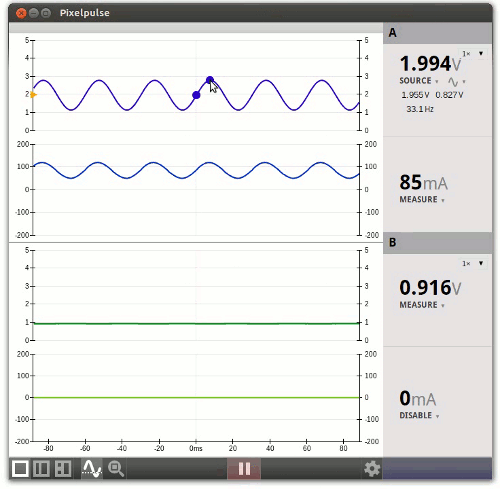
Along with this, it's now possible to adjust the duty-cycle of square waves.
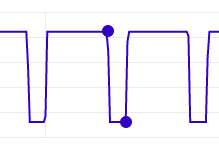
Pixelpulse works great for time-domain exploration, but we also want to see what our circuits do in the frequency domain. We've added an entirely new Dynamic Signal Analyzer tool that automatically generates a Bode Plot of the attached circuitry. A Bode Plot shows how a linear system responds at different frequencies.
Here we try it on a RC low-pass filter. You can see that it allows low-frequency components through, but higher-frequency components are strongly attenuated.
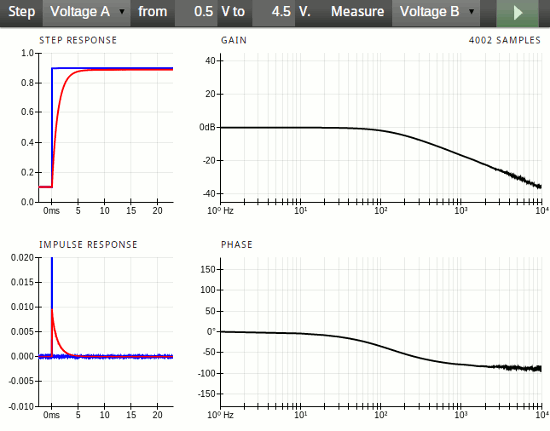
Another highly-requested feature now available is easier data export. Click the export button in the Pixelpulse toolbar to download a snapshot of the current view as CSV for use in your favorite spreadsheet software or programming language.

We're also releasing Nonolith Connect 1.3 today, fixing a few bugs. Some of these new features depend on Connect 1.3 as well as the recently-released CEE firmware 1.2, so you'll want both of these free and fast updates.
CEE and Pixelpulse are entirely open source. Check out the code on GitHub.
Don't have a CEE yet? Buy one now at the special sale price of $129.99.
Beyond CEE's Limits
We just finished up a few pieces of documentation to help you get the most out of your CEE.
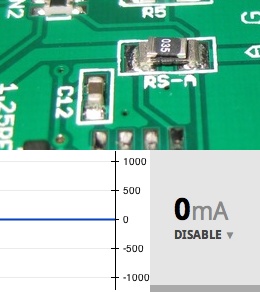
As mentioned in our Kickstarter campaign, CEE can support higher current ranges than the 200mA offered by default, at the cost of resolution and extra wires. This might be useful if you want to use CEE for control applications like driving a solenoid for a magnetic levitator, driving a peltier panel for PCR, or driving a beefy computer fan for use as a magnetic stir plate. We've added software support in Nonolith Connect 1.2, and the walkthrough is now available on our wiki.
We've had several inquiries asking about running Pixelpulse without an internet connection. While all our code is open source and this is very easy to do if you're comfortable in a command line, there's a super-easy shortcut, and there are now instructions on the wiki.
Permalinkv1.2 of Connect and Firmware
We're pleased to announce another set of improvements to CEE's software!
CEE's firmware has been refactored and optimized, doubling the maximum speed from 40,000 samples per second to 80,000! This makes CEE much better suited for time-domain explorations in the audio frequency range. These changes also greatly improve the stability and precision of the CEE's sample timing.
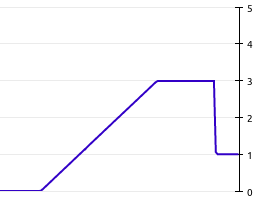
Nonolith Connect has also seen significant improvements, with support added for both the higher speeds afforded by the latest firmware and advanced hardware modifications to support different current ranges. Additionally, support for arbitrary waveforms has been added, allowing you to specify a set of time-value pairs to be used as the output waveform.
![]()
To get these improvements, first install Nonolith Connect 1.2, then update your CEE's firmware. It will only take a few minutes. You'll then see an 80k samples/s option in the Pixelpulse options window. Zoom in to enjoy the new resolution. If you run into any problems, let us know on the discussion group.
PermalinkYou say despair, we say opportunity
Nathan Seidle's recent presentation at MAKE Hardware Innovation Workshop and subsequent post on the SparkFun blog discussed the range of maker businesses, everything from Pebble Watch, with its outstanding $10m Kickstarter Campaign, to the South Park Gnome's business plan. Somewhere in the middle, he says, is the "pit of despair."
And his example for this "pit of despair" was our CEE.
This is where folks have created something - "Hey, I've got this idea, I want to sell it," and they think they're going to sell five or ten, and then they've got a kickstarter that's funded to 10 or 15 thousand dollars, and they go "Oh shoot, how... how do I build this?"
Nathan's argument, that poor design and unexpected demand can make the experience of handling production and fulfillment for a hardware project a nightmare, is absolutely valid. "Hey, I just kinda want to do this" would make a $15,000 kickstarter project a nightmare. However, for us, our Kickstarter tripling its goal merely signaled the start of an adventure that was even bigger than we had hoped.
We were bootstrapping an awesome open-hardware company, not simply wanting to spend someone else's money on a side project. Nathan's "pit of despair" is just the scale where it's possible to realize a vision to its fullest, if you're willing to put in the work. It took a few 18 hour days, but it was worth it to see our dream soar, not just take off.
Early in the process, we turned down an opportunity to outsource assembly, calibration, and testing to Seeed Studio, an "open hardware facilitator" out of China. We made a very calculated decision to in-house as much as possible. We knew exactly how many units we had to deliver, we knew exactly what the mechanical design for our hardware was going to look like, and we decided that the control afforded by keeping the production and fulfillment in-house was worth the few days of nuts and bolts.
We refused to compromise to make things happen. The CEE Kickstarter was big enough to give us the capital to develop something great, yet small enough for us to manage all the details and make sure each customer gets personal support. This is the scale where Open Source Hardware can thrive.
We won't lie; developing a hardware product and the software to go with it isn't easy, but compared to the engineering, the 15 hours to test, calibrate, assemble, package, and ship the first run of our first product didn't even register. Developing something useful and getting awesome feedback is incredibly rewarding. This is what we wanted to do, so we went and did it.
And it paid off. We have hundreds of happy customers; in the past week, we've shipped CEEs to everywhere from Mexico to Prague to Tasmania.
CEE is available for a special sale price this week. Don't worry, we'll be able to assemble them. :)
—
We haven't posted in a while, but keep watching. We're putting the finishing touches on some software and firmware improvements to make your CEE faster and more featureful. Of course, it's all on GitHub if you want a sneak preview.
PermalinkNonolith Connect 1.1 & CEE APIs
We're delighted to announce the availability of Nonolith Connect V1.1. This release adds a simple API that makes easy to to control your CEE from the programming language of your choice. Check out the Python library and demos!
Time to start putting the CEE hardware to work! If you have an app to share, or have questions or suggestions, join us on Google Groups or come to our Google+ Hangout!
PermalinkCEE Has Arrived
Kickstarter orders are out, and we have more CEEs in stock and ready to ship. Get your CEE now, or read our shiny new overview page if you aren't already convinced.
Going forward, we're working to build a healthy ecosystem of demo applications, highlighting innovative uses of the hardware and APIs, giving you a solid "jumping off" point to put your CEEs to work. We're also working on "cEE101," a series of interactive video tutorials that will use your parts kit to teach you the basics of electronics.
If you have an application in mind and are struggling to get started, post to our mailing list and we'll help you out ASAP. If you're making progress, build a wiki page and share your success with others!
PermalinkHome stretch!
Today, we finally received the last package needed to finish this. We now have everything we need to deliver your CEEs. We have cables, we have assembled boards, we have cases, we have more cables, we have kits, we have nuts, and we have bolts. Our test/cal fixture has been reworked, and is pretty much kicking ass. We're putting the finishing touches on our calibration algorithm and starting the arduous process of hand-assembling the ~150 CEEs we need to get done for kickstarter. We're in the same place for the first time in the past six months, and we're powering through to the end.
Here's a teaser - this is what those of you who supported us @ $150 can expect to receive within the next week or two.
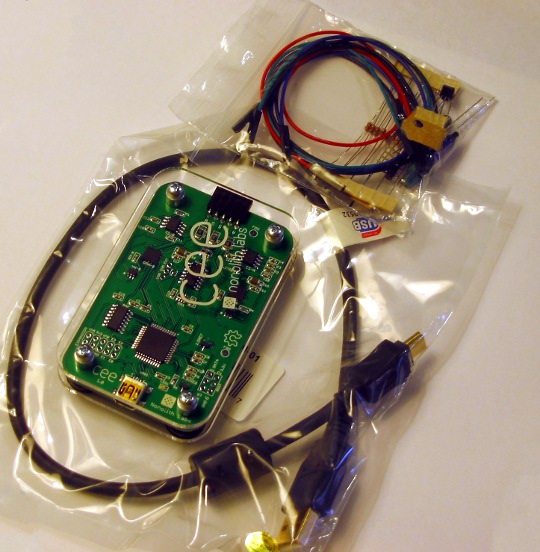
This what you'll get. It took us about 6 minutes to test/cal, screw, and kit this. We just have.... 150 to go...
Also, you should follow us on twitter here.
PermalinkShipment update + Surprise!
The pieces are coming together! Our testbed is working to program CEEs, our case acrylic is looking great, all cables and wires have arrived, and the first CEEs were shipped from our assembly house earlier today.
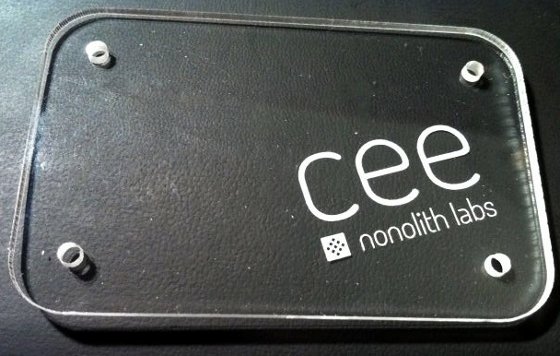
Good news on the software front, too! Pixelpulse, the user interface for the CEE, is almost ready. Check out a screenshot of it plotting the current-voltage curve of an LED:
![]()
We also have a surprise! Everyone who pledged at "minimal CEE" or above will also receive a "getting started" kit containing a handful of parts for you to explore with your CEE. Chris Gammell, of the (awesome) Amp Hour podcast is producing a series of getting-started videos, cEE101, to teach you the fundamentals of electronics and Electrical Engineering. For those of you who are interested, a full listing of the included parts can be found here.
PermalinkPCBs and Production
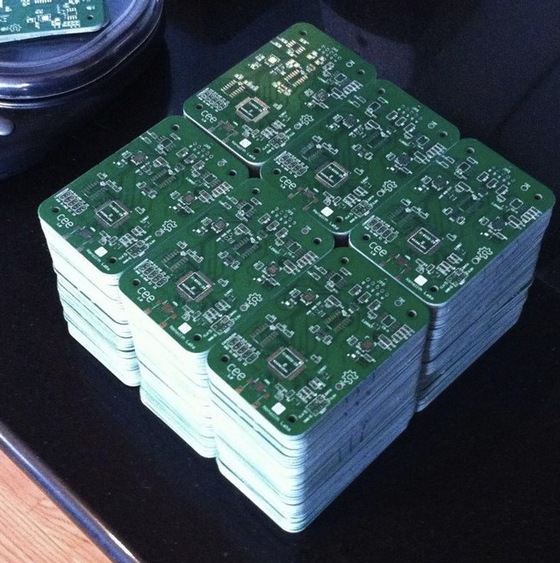
Boards arrived yesterday.
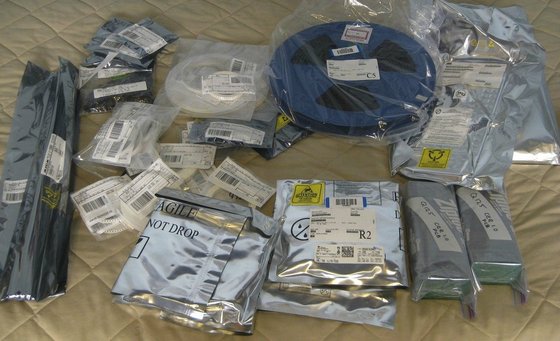
Parts have been sorted and packed.
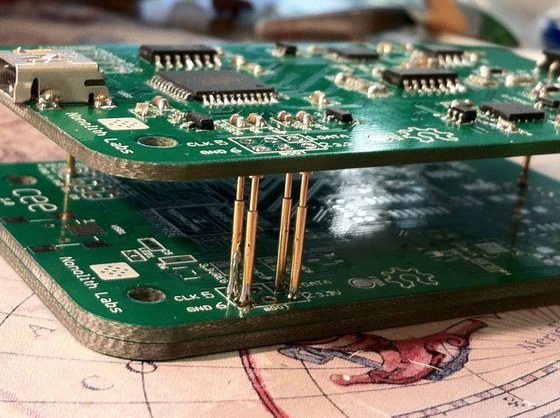
CEE V1.0 has been assembled and tested. This board revision added a single red LED for status indication.
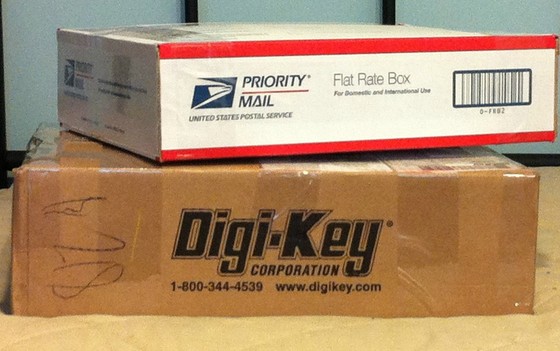
We're sending the supplies to our assembly house tomorrow and we should have CEEs in our hands in about three weeks.
The case is nearing production as well. We're getting the logo printed on the inside of the top panel, for an even nicer look than the laser-etched photos you saw in our previous post. Acrylic is in the mail to our cut/print shop.
Permalink